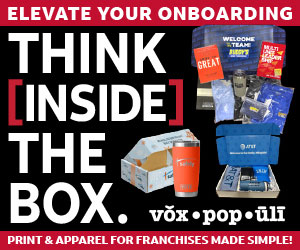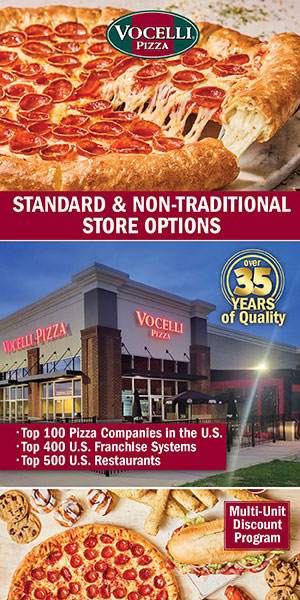Gap Inc. To Retain Iconic Name
SAN FRANCISCO - (BUSINESS WIRE) - August 28, 2019 - Gap Inc. (NYSE: GPS) today announced that, following the completion of the planned spin-off of Old Navy, the new public company, currently referred to as NewCo, will retain the Gap Inc. name. The new Gap Inc. will be a portfolio of brands, including Gap brand, Banana Republic, Athleta, Intermix, Janie and Jack, and Hill City. The announcement comes as the company wraps-up a week-long celebration of its iconic Gap brand’s 50th anniversary.
“As we celebrate this milestone anniversary, we have reflected on the remarkable history of this amazing company and the power and global influence of the Gap name,” said Art Peck, President and Chief Executive Officer of Gap Inc. “Over the past 50 years the credibility and reputation the company has built with the Gap Inc. name transcends any individual brand.”
“Our brands remain a cultural cornerstone with global relevance,” Peck continued. “I am optimistic and excited about the future of the new Gap Inc. Our focus will be on delivering quality revenue growth, and accelerating profitability and cash flow, while positively impacting our employees, our shareholders, the communities in which we do business, and our planet.”
Old Navy will continue to operate under its current name when it becomes a standalone, publicly traded company. As previously announced, Sonia Syngal— who has led Old Navy since 2016 — will continue as the CEO of Old Navy and Art Peck will become CEO of the new Gap Inc.
Gap Inc. will host an investor event on September 12, 2019 in New York where Peck and Syngal will provide an update on the planned separation.
The transaction remains subject to certain conditions, including final approval by Gap Inc.’s Board of Directors, receipt of a tax opinion from counsel and the filing and effectiveness of a registration statement with the U.S. Securities and Exchange Commission.
Forward-Looking Statements
This press release contains forward-looking statements within the “safe harbor” provisions of the Private Securities Litigation Reform Act of 1995. All statements other than those that are purely historical are forward-looking statements. Words such as “expect,” “anticipate,” “believe,” “estimate,” “intend,” “plan,” “project,” and similar expressions also identify forward-looking statements. Forward-looking statements include statements regarding the following: future revenue growth, profitability, cash flow, potential future plans or strategies of the company or the independent companies following the proposed separation transaction, the structure, benefits, and completion of the separation transaction.
Because these forward-looking statements involve risks and uncertainties, there are important factors that could cause the company’s actual results to differ materially from those in the forward-looking statements. These factors include, without limitation, the following risks, any of which could have an adverse effect on the company’s financial condition, results of operations, and reputation: the risk that additional information may arise during the company’s close process or as a result of subsequent events that would require the company to make adjustments to its financial information; the risk that the company or its franchisees will be unsuccessful in gauging apparel trends and changing consumer preferences; the highly competitive nature of the company’s business in the United States and internationally; the risk of failure to maintain, enhance and protect the company’s brand image; the risk of failure to attract and retain key personnel, or effectively manage succession; the risk that the company’s investments in customer, digital, and omni-channel shopping initiatives may not deliver the results the company anticipates; the risk if the company is unable to manage its inventory effectively; the risk that the company is subject to data or other security breaches that may result in increased costs, violations of law, significant legal and financial exposure, and a loss of confidence in the company’s security measures; the risk that a failure of, or updates or changes to, the company’s information technology systems may disrupt its operations; the risk that trade matters could increase the cost or reduce the supply of apparel available to the company; the risk of changes in the regulatory or administrative landscape; the risks to the company’s business, including its costs and supply chain, associated with global sourcing and manufacturing; the risk of changes in global economic conditions or consumer spending patterns; the risks to the company’s efforts to expand internationally, including its ability to operate in regions where it has less experience; the risks to the company’s reputation or operations associated with importing merchandise from foreign countries, including failure of the company’s vendors to adhere to its Code of Vendor Conduct; the risk that the company’s franchisees’ operation of franchise stores is not directly within the company’s control and could impair the value of its brands; the risk that the company or its franchisees will be unsuccessful in identifying, negotiating, and securing new store locations and renewing, modifying, or terminating leases for existing store locations effectively; the risk of foreign currency exchange rate fluctuations; the risk that comparable sales and margins will experience fluctuations; the risk that changes in the company’s credit profile or deterioration in market conditions may limit the company’s access to the capital markets; the risk of natural disasters, public health crises, political crises, negative global climate patterns, or other catastrophic events; the risk of reductions in income and cash flow from the company’s credit card agreement related to its private label and co-branded credit cards; the risk that the adoption of new accounting pronouncements will impact future results; the risk that the company does not repurchase some or all of the shares it anticipates purchasing pursuant to its repurchase program; the risk that the company will not be successful in defending various proceedings, lawsuits, disputes, and claims; risks associated with the impact, timing or terms of the separation transaction; the risks associated with the expected benefits and costs of the separation transaction, including the risk that the expected benefits of the separation transaction will not be realized within the expected time frame, in full or at all, and the risk that conditions to the separation transaction will not be satisfied and/or that the separation transaction will not be completed within the expected time frame, on the expected terms or at all; the expected qualification of the separation transaction as a tax-free transaction for U.S. federal income tax purposes, including whether or not an IRS ruling will be sought or obtained; the risk that any consents or approvals required in connection with the separation transaction will not be received or obtained within the expected time frame, on the expected terms or at all; risks associated with expected financing transactions undertaken in connection with the separation transaction and risks associated with indebtedness incurred in connection with the separation transaction; the risk that dissynergy costs, costs of restructuring transactions and other costs incurred in connection with the separation transaction will exceed our estimates; and the impact of the separation transaction on our businesses and the risk that the separation transaction may be more difficult, time-consuming or costly than expected, including the impact on our resources, systems, procedures and controls, diversion of management’s attention and the impact on relationships with customers, suppliers, employees and other business counterparties. There can be no assurance that the company’s separation transaction will in fact be completed in the manner described or at all.
Additional information regarding factors that could cause results to differ can be found in the company’s Annual Report on Form 10-K for the fiscal year ended February 2, 2019, as well as the company’s subsequent filings with the Securities and Exchange Commission.
These forward-looking statements are based on information as of August 28, 2019. The company assumes no obligation to publicly update or revise its forward-looking statements even if experience or future changes make it clear that any projected results expressed or implied therein will not be realized.
About Gap Inc.
Gap Inc. is a leading global retailer offering clothing, accessories, and personal care products for men, women, and children under the Old Navy, Gap, Banana Republic, Athleta, Intermix, Janie and Jack, and Hill City brands. Fiscal year 2018 net sales were $16.6 billion. Gap Inc. products are available for purchase in more than 90 countries worldwide through company-operated stores, franchise stores, and e-commerce sites. For more information, please visit www.gapinc.com.
Contacts:
Tina Romani
Investor Relations
(415) 427-5264
[email protected]
Trina Somera
Media Relations
(415) 427-3145
[email protected]
SOURCE Gap Inc.
###
| ADVERTISE | SPONSORED CONTENT |
Franchise News
By Type
- Expansions & Growth
- Financial & Earnings Claims
- Mergers & Acquisitions
- Personnel Changes
- Conferences & Events
- Product Announcements
- Media Coverage
- Strategic Alliances
By Sector
| ADVERTISE | SPONSORED CONTENT |



 The franchise opportunities listed above are not related to or endorsed by Franchising.com or Franchise Update Media Group. We are not engaged in, supporting, or endorsing any specific franchise, business opportunity, company or individual. No statement in this site is to be construed as a recommendation. We encourage prospective franchise buyers to perform extensive due diligence when considering a franchise opportunity.
The franchise opportunities listed above are not related to or endorsed by Franchising.com or Franchise Update Media Group. We are not engaged in, supporting, or endorsing any specific franchise, business opportunity, company or individual. No statement in this site is to be construed as a recommendation. We encourage prospective franchise buyers to perform extensive due diligence when considering a franchise opportunity.